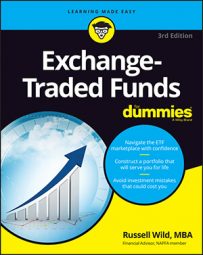If you allocate roughly half your equities to overseas ETFs in your stock portfolio, you’ll have plenty of exposure to foreign currencies. But still, if you have a fairly large portfolio and half or more of it is in bonds, allocating perhaps 10 to 25 percent of your bonds to overseas ETFs would enhance the benefits you can achieve from diversification.
At the same time, you should understand that because of their exposure to foreign currencies, these bond funds tend to be more volatile than U.S. bond funds.
Over the long haul, bonds of similar default risk and maturity will likely yield about the same percentage. But in the short run, substantial differences can exist in the yields and total returns of U.S. versus foreign bonds. The big difference is often due to currency exchange rates.
If you are holding foreign bonds and the dollar drops vis-à-vis your foreign currencies, your foreign bond funds tend to do better. If the dollar rises, you’ll likely be disappointed in your foreign bond fund returns.
Note that as is the case with U.S. bonds, international bonds can be of the conventional type or inflation-adjusted. Whereas U.S. inflation-protected bonds deserve an allotment in most portfolios, foreign inflation-protected bonds just don’t make as much sense (unless you plan to retire abroad or take a lot of senior world cruises). Nevertheless, for the sake of added diversification, if you want to add a small dose of inflation-adjusted foreign bonds to your portfolio, go ahead, but keep it small.
iShares S&P/Citigroup International Treasury Bond Fund (IGOV)
Indexed to: The S&P/Citigroup International Treasury Bond Index Ex-US, which holds about 100 bonds that, collectively, track the sovereign debt of developed foreign nations, mostly in Western Europe and Japan
Expense ratio: 0.35
Current yield: 3.3 percent
Average credit quality: AA
Average weighted maturity: 8.5 years
Top five countries: Japan, Italy, France, Germany, Netherlands
This may be your best option for one-shot foreign bond exposure. Be aware that about half of the fund’s holdings are denominated in Euros. Your returns will therefore be very dependent on the Euro-Greenback exchange rate. (You want the Euro to fly.) This fund is very, very similar to the SPDR Barclays Capital International Treasury Bond (BWX), but BWX carries an expense ratio of 0.50 percent. Go with the iShares fund.
iShares International Inflation-Linked Bond Fund (ITIP)
Indexed to: The BofA Merrill Lynch Global ex-US Diversified Inflation-Linked Index, which compiles about 40 inflation-linked bonds of both developed and emerging-market nations
Expense ratio: 0.40 percent
Current yield: 1.2 percent + inflation bump
Average credit quality: AA
Average weighted maturity: 11.4 years
Top five countries: United Kingdom, France, Turkey, Israel, Brazil
This fund is awfully similar to the SPDR DB International Government Inflation-Protected Bond ETF (WIP), which carries an expense ratio of 0.50 percent. So, this fund is quite the bargain by comparison.

